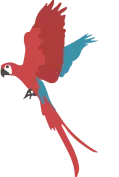Have you ever wondered why we’re drawn to stories? The truth is, stories are powerful. Whether you realise it or not, they’re all around you. In advertisements, films and even on social media. In this article we’ll explore how a storytelling model that has been used for thousands of years. And which we recently rediscovered when we read ‘Approaching the Corporate Heart’ by Margot Cairnes. Reading this book 23 years after it was originally published and through a marketing lens was nothing but fascinating. In this article, we would like to cover how you can use the 12 steps of the hero’s journey in your marketing strategy to communicate powerfully and convert customers. So, let’s begin our journey…
1. Ordinary world
Every hero’s journey starts in an ordinary world. This is the state of affairs that existed before the story began and it sets up what will be tested when faced with challenges later on.
You can use this step to introduce your customer to their current situation. Gently piquing their interest by introducing a problem or challenge they are facing which you believe your product may help them overcome.
2. Call to adventure
Once you have set up your ordinary world, it’s time to show how the customer is being called on to do something that will take them into the unknown. You can use this step as an opportunity to introduce the product/service that will be central in overcoming the challenges they face.
You could also emphasise why customers would want your product or service. It is beneficial to explain this through carefully chosen benefits and features which help them achieve their goals more effectively than they currently are by using other means. Make sure that these claims are backed-up with proof from reputable sources wherever possible!
3. Refusal of the call
Even though your customer has been called on to do great things as they step into the unknown, they may not want to take on the challenge. It takes a lot of courage for someone to leave their comfort zone behind and venture into new territory!
This moment could be used as an opportunity to share why your product/service is essential in overcoming the challenges they’re facing. Convince readers that there are benefits beyond what you have mentioned so far. Such as saving time or money, gaining peace of mind or avoiding embarrassment. Try offering proof through testimonials from existing customers where possible!
If you use the right wording and put together a strong argument, your customer should feel compelled to take on the challenge as the next step.
This is a good chance to drop your first call-to-action (CTA), for example asking for their email address in exchange for a free resource.

4. Meeting the mentor
Once your customer has committed to taking on the challenge, you can introduce a mentor who will guide them through these challenges and help them achieve their goals. This could be a person who has successfully used your product/service in the past and is willing to share their advice with others. Or it could be an authority figure (e.g., CEO) from within your company!
You can emphasise how helpful this mentor will be by sharing some of the key things they taught you about overcoming these challenges. Again, offer proof whenever possible through testimonials.
5. Crossing the threshold
The Hero is now prepared to act on their call to adventure and start their quest! This is the point where they’ve made the decision to purchase your product/service. This step can be used to tell your customers exactly where they go next to purchase your product/service. After that that they don’t hesitate any longer!
Use a second CTA which asks customers to purchase the product/service directly from you (or sign up if it’s free). You should make sure that there are no barriers between them. And take action by being clear about how much it will cost them in total so that they know exactly what they’re committing themselves to.
6. Tests, allies and enemies
Once your customer has made the decision to purchase and use your product/service, you can highlight the challenges they will face throughout this process. This could be overcoming their fear of failure. Taking advantage of an opportunity or simply knowing how to use it! Emphasise how other customers have successfully overcome these challenges when using your product/service.
You can also use this stage to show how helpful your company is by sharing advice and tips on overcoming any obstacles they may face. For example, by sharing any training resources or how to get in touch for more support.

7. Approach to the inmost cave
As we move towards our final steps, make sure that customers know exactly how their life will be different once they’ve successfully made it through all of the above-mentioned obstacles. This could involve showing how much time or money they’ll save, gaining peace of mind etc.
This is a good point at which to reiterate what makes your company unique in comparison with competitors on the market. So that readers feel more confident about choosing you!
8. The ordeal
This is the final hurdle that your customer will have to overcome before they start reaping the benefits of making their purchase. This could be overcoming any issues with installation, learning how everything works or simply being able to use it!
The best way to help customers get through this stage is by offering direct support so that they can receive guidance from experts in whatever area may cause them difficulty. For example, someone who has just purchased a new mobile phone might need assistance setting up their Google Play account for apps etc.
9. The reward
Once your customer has overcome the final hurdle, you can share what they’ll gain as a result. For example, they might save time/money, gain peace of mind or experience a sense of satisfaction!
You can also use this stage to highlight the big-picture benefits that they’ll gain from using your product/service including any long-term financial gains. For example, if they’re purchasing software, they might save money by not having to hire an in-house IT specialist!

10. The road back
By the time they get to this point, your customer will have fully committed themselves and crossed the threshold. However, it’s important that you continue following up with them. So that they don’t feel tempted to go back on their decision!
You can do this by offering tips and advice on how best to use your product/service. Which can be sent straight to their inbox for easy reference whenever necessary. You could also offer additional support such as training guides or webinars if relevant too.
11. Resurrection
Once your customer has successfully made it through the threshold, they’ll feel a sense of renewed energy and excitement about what’s to come. This is also an excellent time for you to emphasise that there are still plenty of benefits to be gained from using your product/service in future. This is possible by sharing news or updates on any new features etc.
12. Return with the elixir
The final stage of the journey is all about celebrating your customer’s success and sharing how their life has changed as a result. The ultimate prize that they receive might be a cause for celebration. It can also be self-awareness, or the end of the conflict, but whatever it is, it represents three things. Change, success, and proof of their journey.
You can do this by highlighting any additional benefits they may have gained from using your product/service and thanking them for choosing you! This is also a good stage to ask for testimonials to show potential customers how they achieved success.
In conclusion
The 12 steps of the hero’s journey are an excellent way to ensure that your customer feels like they’re on a journey towards success. Which will inspire their commitment to purchase from you. There are so many ways you can incorporate this formula into your marketing messages, so why not give it a try right now?
Use these steps in combination with storytelling techniques and you’ll be able to engage customers on your journey and have them coming back for more!

